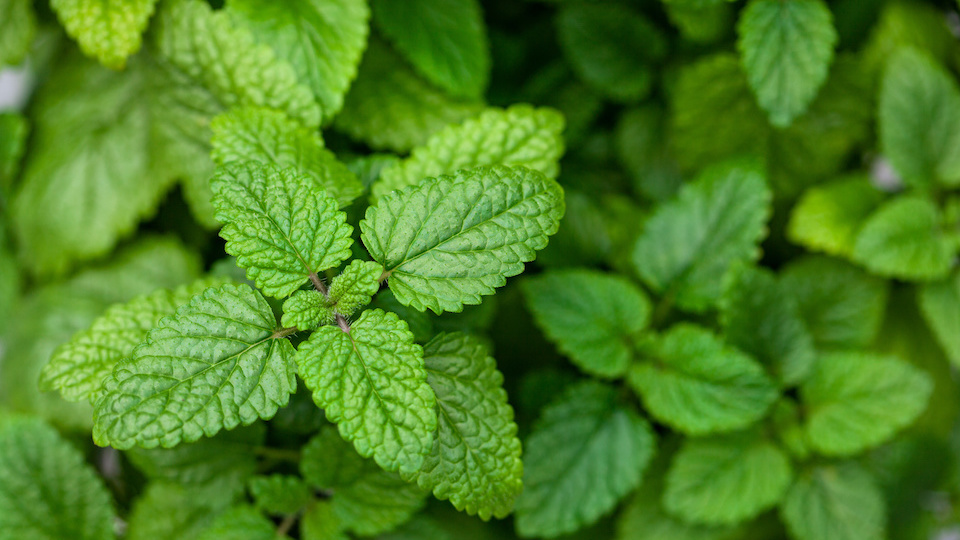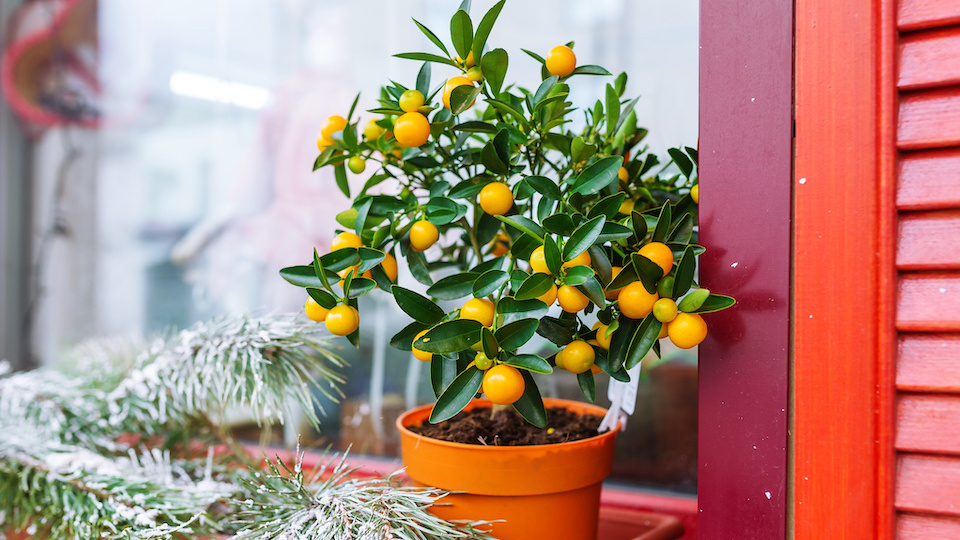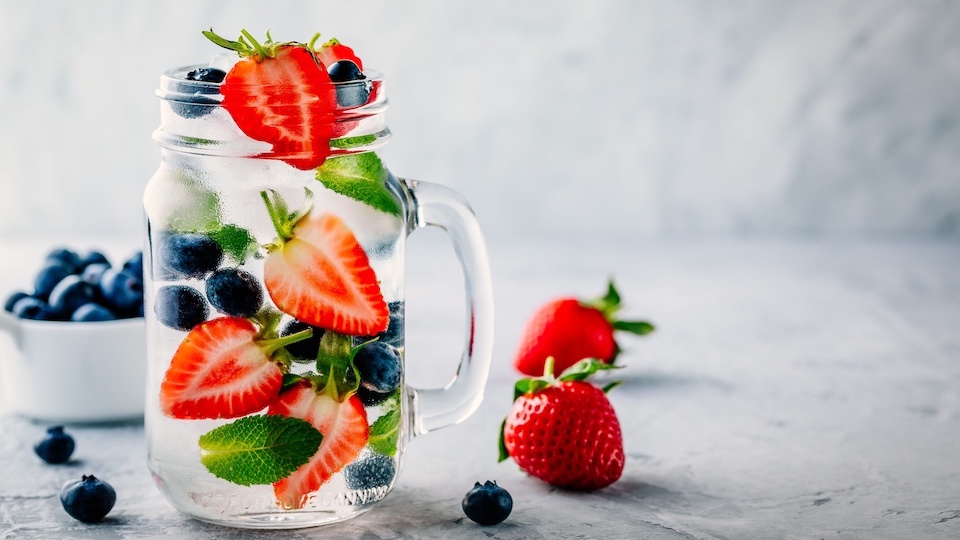Water, we can’t live without it, and consuming it on its own has a myriad of health benefits such as keeping us hydrated, aiding in weight loss, and keeping our skin, hair, and nails looking great. Plus, it can aid in digestion, maintain the balance of body fluids, energize muscles, help kidneys and bowels with regular function, and so much more. But…do you sometimes get tired of water and wish that it actually tasted like something other than, well, water? You are in luck. There are a number of easy-to-grow, delicious and nutritious herbs and fruits that you can add to your water.
Be honest; water can get kind of boring on its own, can’t it? I love water, but that is sometimes not enough to make me drink the proper amount each day. A few years ago, I started to experiment with putting all sorts of fresh herbs and fruit into my water and it changed my relationship with water forever.
The best part of all is that not only did these fresh additions make my water taste great, but they are so easy to grow and add a super nutritional boost to every sip of water I take. Here are my absolute favorite combinations to enjoy.
Lemon Balm and Lemon Water
A member of the mint family, lemon balm is most noted for its sweet, soothing lemony scent. Although this aromatic plant grows well in USDA zones 4-9, it is not a fan of humidity and prefers cooler temperatures.
The medicinal properties of this perennial herb date back to the ancient Greeks and Romans, who often referred to it as a “cure-all,” employing lemon balm as a treatment for everything from stomach upset to topical cures for skin issues. Even earlier writings suggest that this aromatic herb was a staple among healers as far back as 300 B.C. Thanks to lemon balm’s high concentration of phytochemicals, it can be used to remedy several ailments. While historically used as a treatment for practically everything, recent research has noted that the herb’s mood-elevating and anti-anxiety properties may be useful in treating depression and related conditions. Other research has focused on lemon balm’s antiviral properties, noting that it can fight sores caused by the Herpes virus and reduce the infectivity of HIV in exposed patients.

Lemon balm will grow indoors as long as it gets as much direct light as possible, at least six hours of strong sunlight each day. It also likes a steady supply of water as long as it has good drainage. Outdoors, it can be grown in just about any climate in an area that gets lots of sun, though some shade during the day is okay. Use rich soil and a little organic fertilizer to give it a little boost. Though lemon balm does not spread by underground runners like mint, it will still spread seeds and begin to take over the garden if left unchecked. Trim it back to several inches tall a few times during the growing season.
Lemons are my favorite of all citrus fruits. They are loaded with vitamin C, the most powerful antioxidant found in nature. Consuming vitamin C helps the body to neutralize free radicals that are responsible for damaging cells that lead to inflammation and disease such as heart disease, and cancer. Lemons can help with digestion, promote weight loss, and even reduce the risk of kidney stones.
Unless you live in a tropical climate such as Florida, growing lemons all year long outdoors is difficult. However, the good news is, dwarf lemon trees are easy to grow all year indoors as long as you place them in a sunny window and give them the TLC they need.

Lemons are a very rewarding houseplant, with the most common type being Meyer lemons. Here are a few things to keep in mind when growing them.
- Containers must have adequate drainage and room for growth. Lemons reach 3 to 5 feet when grown indoors.
- Provide well-draining, slightly acidic soil, and keep it evenly moist.
- Temperatures of 70 degrees F during the day and 55 degrees F at night are best for lemon trees. They will go into dormancy if temperatures fall below 55 degrees F.
- Allow the soil to dry out before watering.
- Fertilize regularly using a nitrogen fertilizer designed for citrus trees. The best time to fertilize is between April and September. Don’t feed during the late fall and winter months.
Lemon Twist Ice Water
What you need
- Purified water
- 3 lemon slices
- 7 lemon balm leaves, rinsed and minced
- Ice
How to make it
- Add lemon slices to a glass and fill with ice.
- Fill with water and add the lemon balm leaves.
- Mix lightly with a spoon and enjoy.
Peppermint Strawberry Water
Peppermint is synonymous with the Christmas season and it is also one of the world’s most popular and well-known herbs. It’s been used for thousands of years and was even mentioned in the world’s oldest surviving medical text, the Ebers Papyrus, which is believed to date back to the 16th-century BC. Throughout history, peppermint has been used to treat various digestive ailments, soothing everything from bloating and gas to constipation and diarrhea.

Today, many turn to the herbal extract for relief from Irritable Bowel Syndrome (IBS) symptoms. The essential oil of peppermint has been proven to be effective in inhibiting bacterial growth as well as certain types of fungal growths. Peppermint has had a reputation for over 1,000 years for being great at eliminating bad breath. It does this in two ways: it has a strong scent and it kills odor-causing bacteria. The herb is an excellent source of nutrients such as manganese, vitamins C, A, and B2, folate, iron, calcium, and potassium, to name just a few.
This aromatic herb is best grown in containers due to its invasive nature, making it ideal for growing indoors or in a small outdoor space like a patio or balcony. It does best in moist, well-drained soil and partial sun. Avoid putting it in a place where it gets lots of full, direct sun. For a lengthy harvest, keep the flowers pinched back, but wait until the plant is 10 to 12 inches high before picking the leaves to avoid weakening. They tend to be at their best just prior to flowering.

Strawberries are not only a delicious snack but also a natural energy-boosting fruit. One cup of strawberries contains carbohydrates, fiber, natural sugars, and 100% of the recommended daily vitamin C amounts. Strawberries fight inflammation, and their antioxidants may help to reduce fatigue and provide energy.
Transplant small plants into the garden a few weeks before the last frost date. Berries will be ready to harvest around 30 days after flowers bloom and will produce fruit all season long. Birds love strawberries; protect your plants with a lightweight bird net as the berries open. Alpine strawberries are a favorite and heavy feeders. Add lots of well-rotted compost to the garden before planting healthy starters.
PepperBerry Water
What you need
- Purified water
- 4 strawberries sliced
- 7 peppermint leaves, rinsed and minced
- Ice
How to make it
- Add strawberry slices to a glass and fill with ice.
- Fill with water and add the peppermint leaves.
- Mix lightly with a spoon and enjoy.
Note: For a bolder flavor – make bigger batches and infuse overnight. For additional flavor you can also add herbal ice cubes!
The sky’s the limit
Not only do fruit and herb combinations taste great in water – get creative and add some veggies as well. The sky is really the limit! Be bold and experiment with your favorite fresh produce. Here are a few more combinations that you can try.
- Strawberry, basil, and lemon
- Honeydew, cucumber, and mint
- Pomegranate and mint
- Ginger, blackberries, and orange
- Ginger and thyme
- Lavender and lemon
- Watermelon and basil
Drink up and enjoy. Happy growing!
-Susan Patterson, CBHC and Master Gardener



